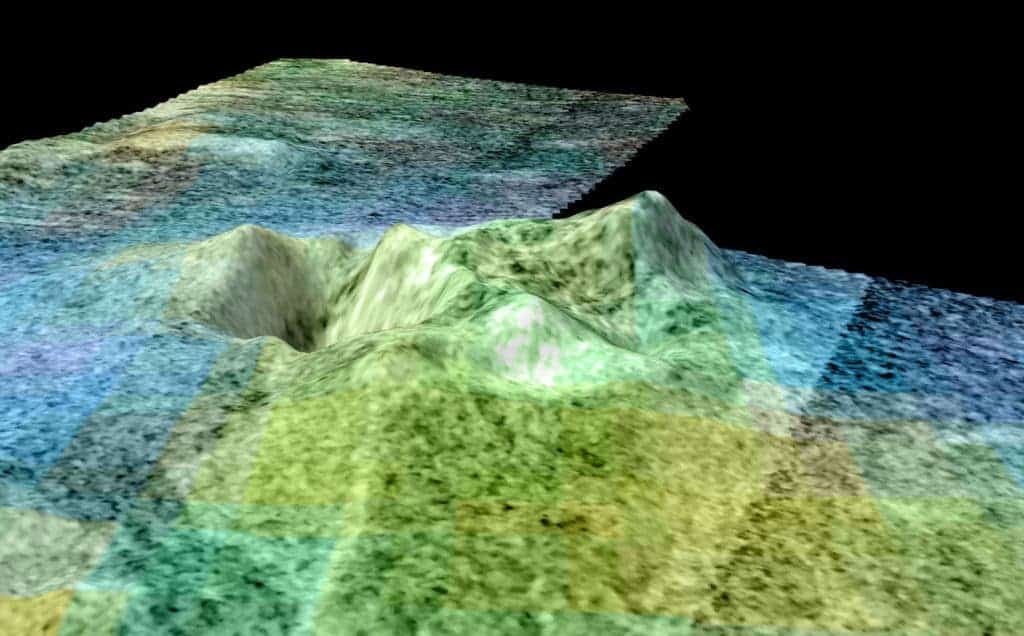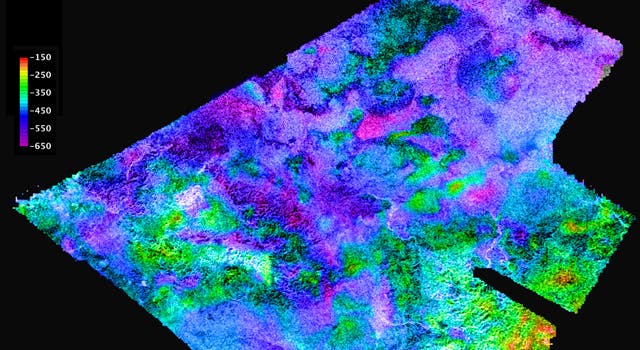Titan, one of the least Earth-like places in our solar system, turned out to have surprisingly Earth-like features.

Until recently, not much was known about Saturn’s moon Titan. But the Cassini-Huygens mission changed all that. Titan, a Mercury-sized world with a surface shrouded in a thick, nitrogen-rich atmosphere, was found to be the only place other than Earth where clear evidence of stable bodies of surface liquid has been found.
Titan is also a prime candidate for finding extraterrestrial life, which is why researchers have been trying to better understand its structure. Now, in two published papers, astronomers present the first proper map of Titan, revealing its features in unprecedented detail.
It took doctoral student Paul Corlies a year to assemble the map from all existing data. It was no easy feat since only 9 percent of Titan’s topography has been observed in relatively high-resolution. Another 25-30 percent of the topography imaged in lower resolution. The rest was created using an interpolation algorithm — which means we don’t really know how the rest of Titan is like, but we know how it probably looks like.

For starters, the map reveals Titan to be a bit flatter (more oblate) than previously thought. This suggests that the thickness of Titan’s crust also varies more than expected. Corlies also reports that the surface of Titan is covered by mountains, though none of them are higher than 700 meters (2300 feet). The map also shows Titan’s lows, allowing scientists to confirm that two locations in the equatorial region are in fact depressions — and not dried seas, as another theory proposed.
Researchers also analyzed Titan’s impressive lakes, but don’t get your hopes up just yet. As opposed to Earth’s lakes, which are covered by water, Titan’s lakes are filled with liquid methane, a hydrocarbon.
Starting from sea level
Corlies found that Titan’s three most massive lakes (or seas) share a common equipotential surface — which is just a fancy way of saying that they have a common sea level. Titan’s lakes communicate with each other through the subsurface; the lakes that are dry are all at higher elevations than the filled lakes in their vicinity. Alex Hayes, assistant professor of astronomy and also an author, predicted this in his previous models of Titan.
“We don’t see any empty lakes that are below the local filled lakes because, if they did go below that level, they would be filled themselves. This suggests that there’s flow in the subsurface and that they are communicating with each other,” said Hayes. “It’s also telling us that there is liquid hydrocarbon stored on the subsurface of Titan.”
The fact that astronomers are understanding so much about a satellite so far away from Earth is truly astounding, yet this is only a stepping stone for other research. Study authors say that the map will help others working on Titan’s geology and morphology, as well as those trying to improve models for extraterrestrial bodies. Ultimately, it could even help scientists understand whether or not life exists on Titan.
“We’re measuring the elevation of a liquid surface on another body 10 astronomical units away from the sun to an accuracy of roughly 40 centimeters. Because we have such amazing accuracy we were able to see that between these two seas the elevation varied smoothly about 11 meters, relative to the center of mass of Titan, consistent with the expected change in the gravitational potential. We are measuring Titan’s geoid. This is the shape that the surface would take under the influence of gravity and rotation alone, which is the same shape that dominates Earth’s oceans,” said Hayes.
Journal References:
- P. Corlies, et al. Titan’s Topography and Shape at the End of the Cassini Mission. Geophysical Research Letters, 2017; 44 (23): 11,754 DOI: 10.1002/2017GL075518
- A. G. Hayes, et al . Topographic Constraints on the Evolution and Connectivity of Titan’s Lacustrine Basins. Geophysical Research Letters, 2017; 44 (23): 11,745 DOI: 10.1002/2017GL075468






